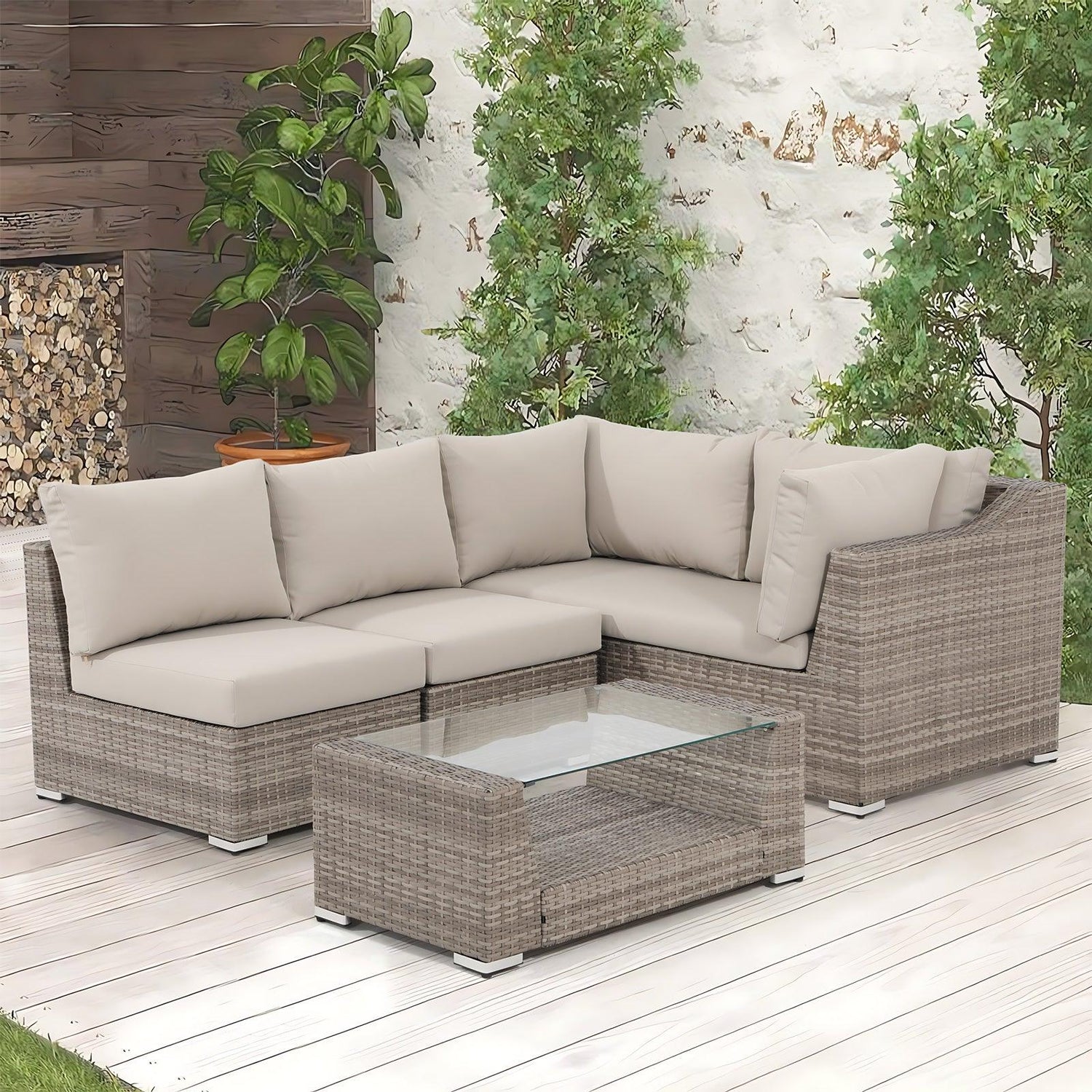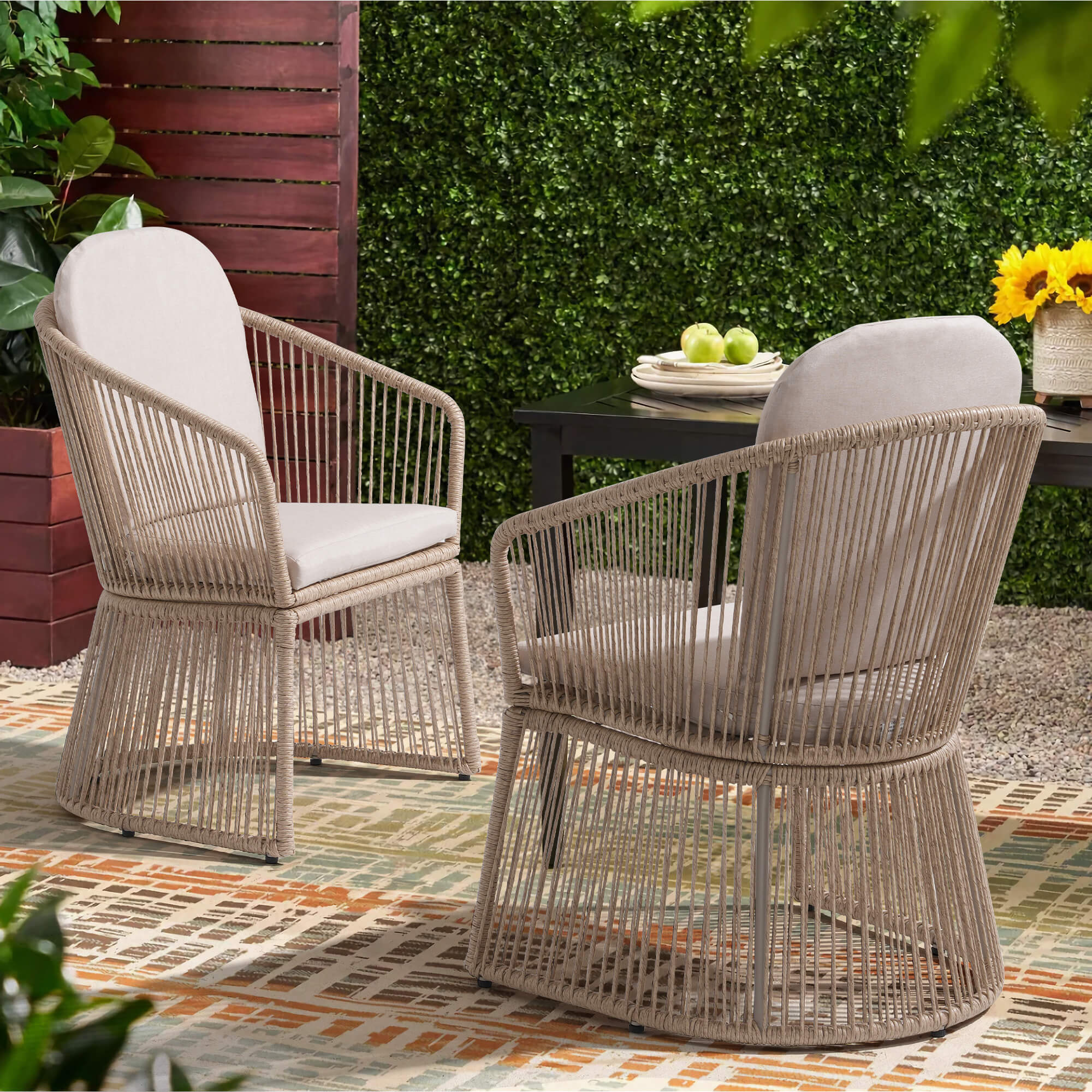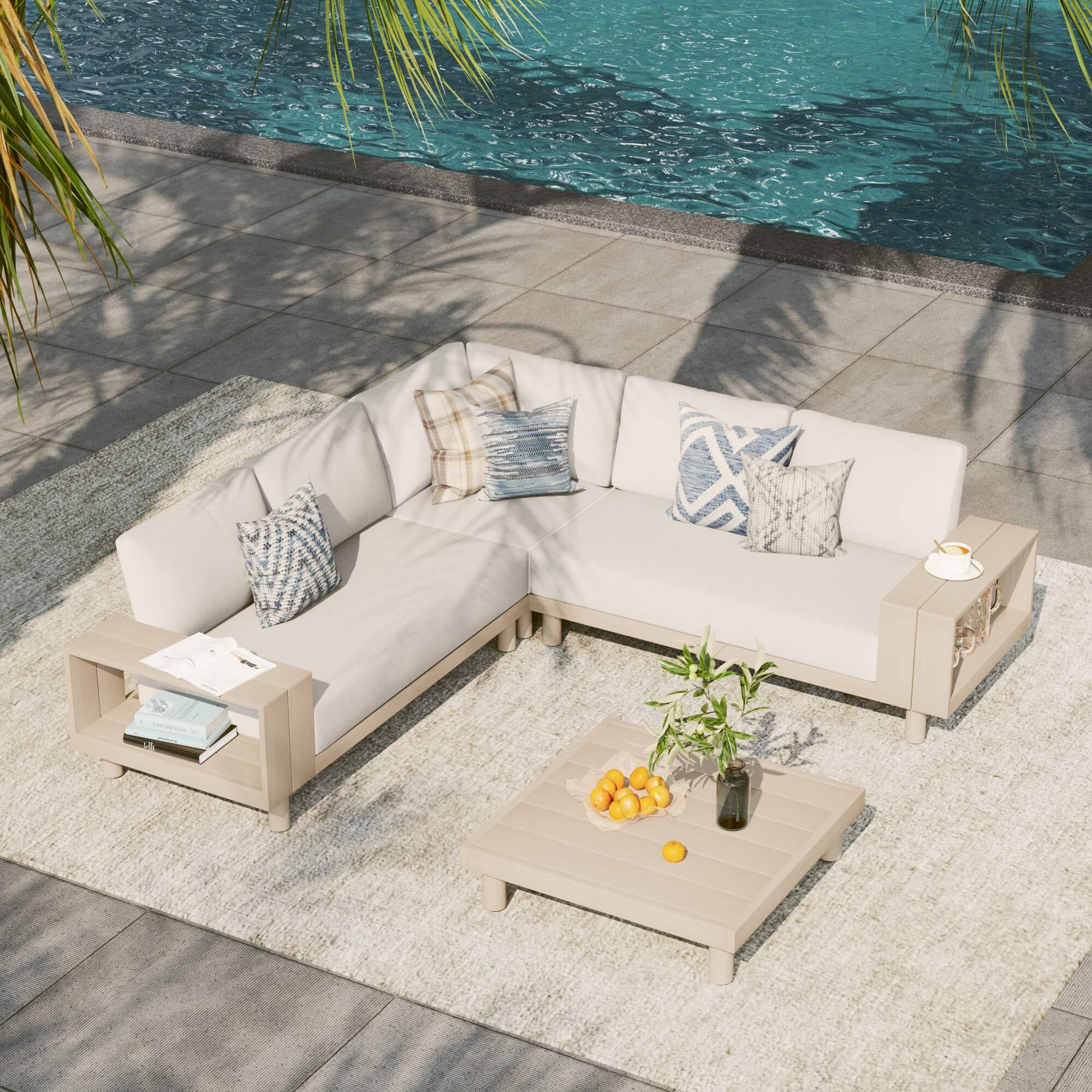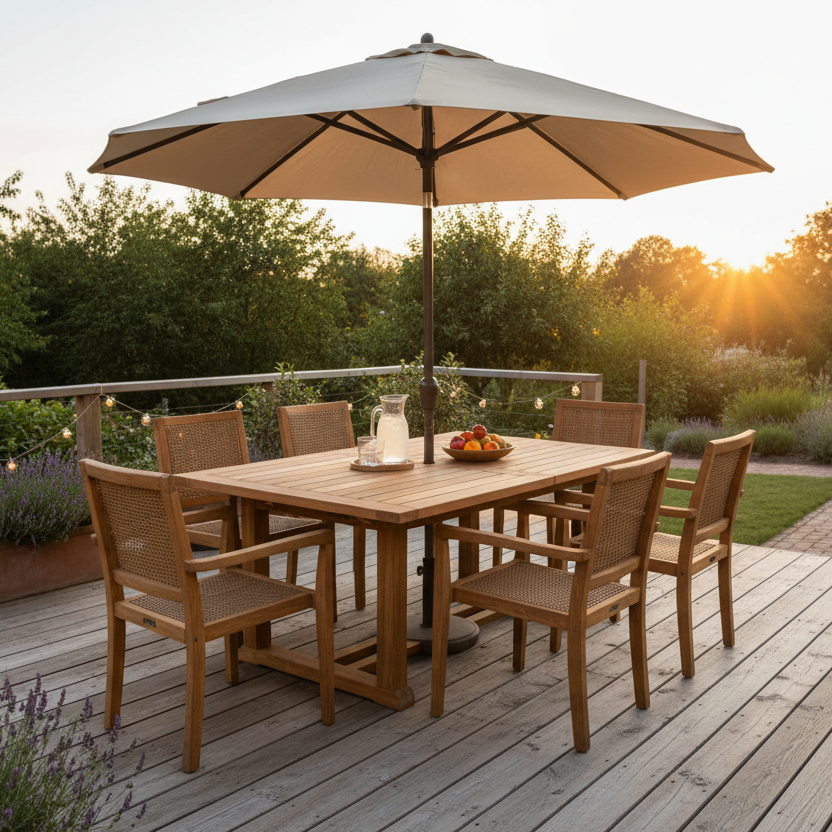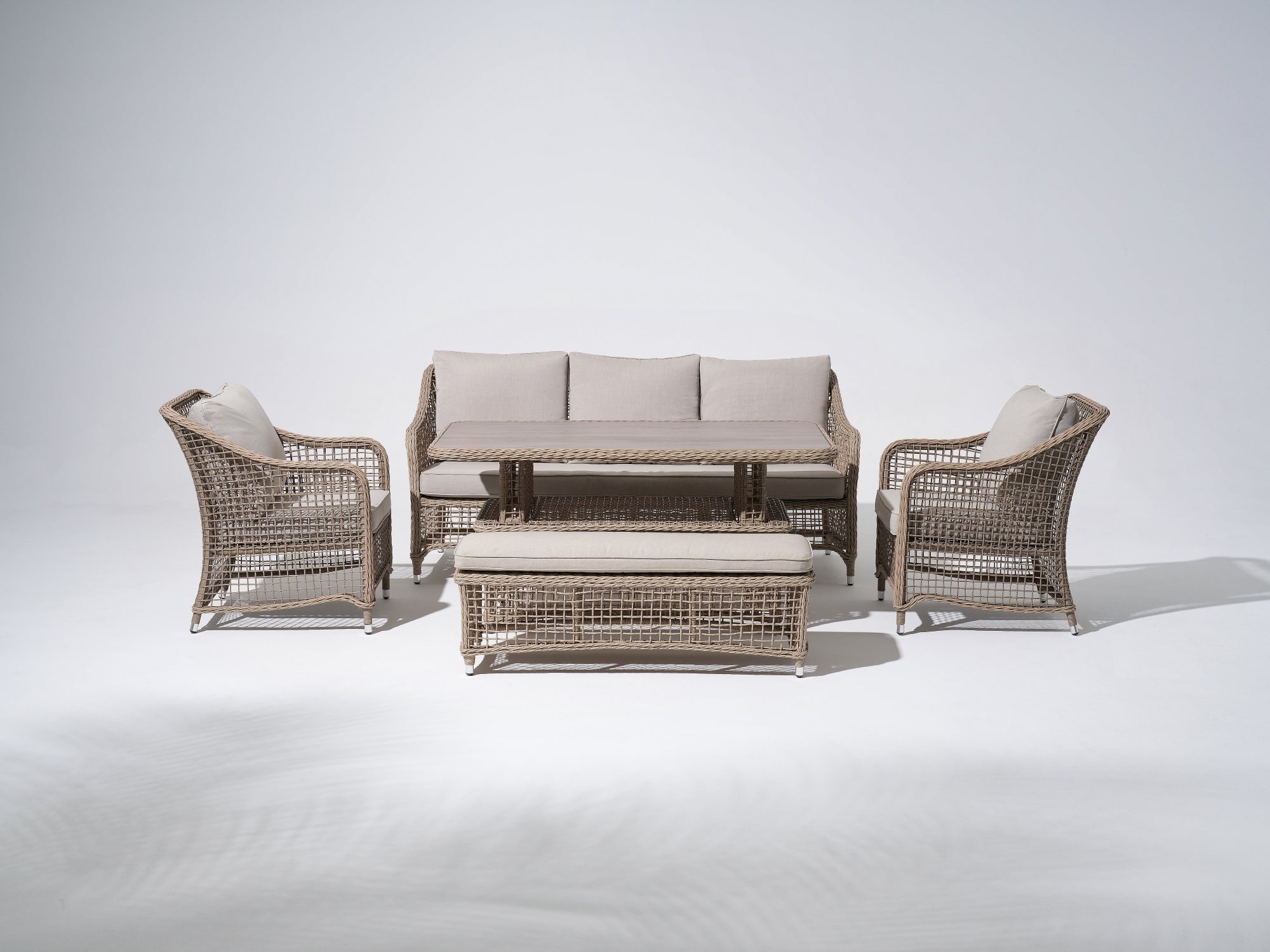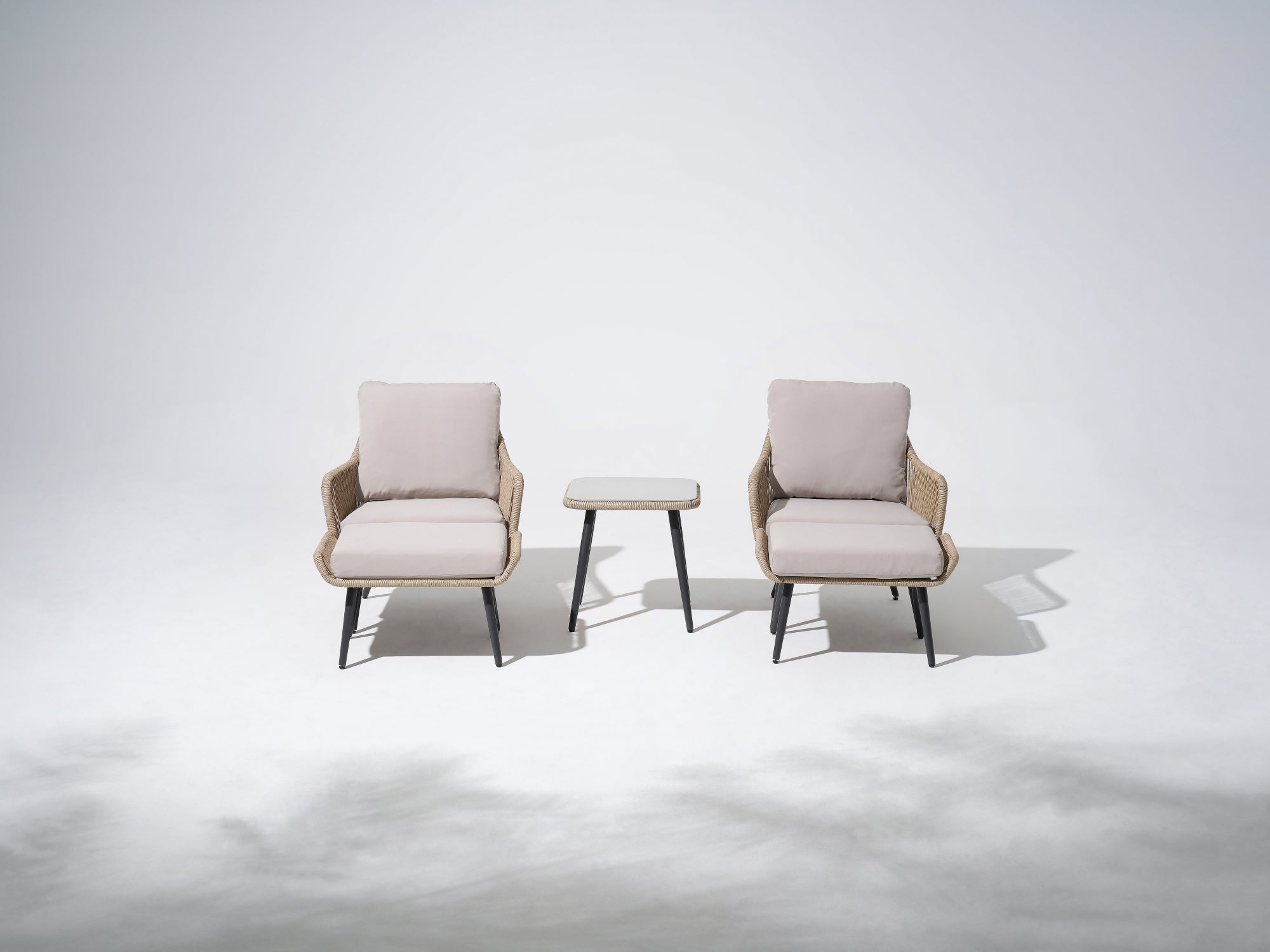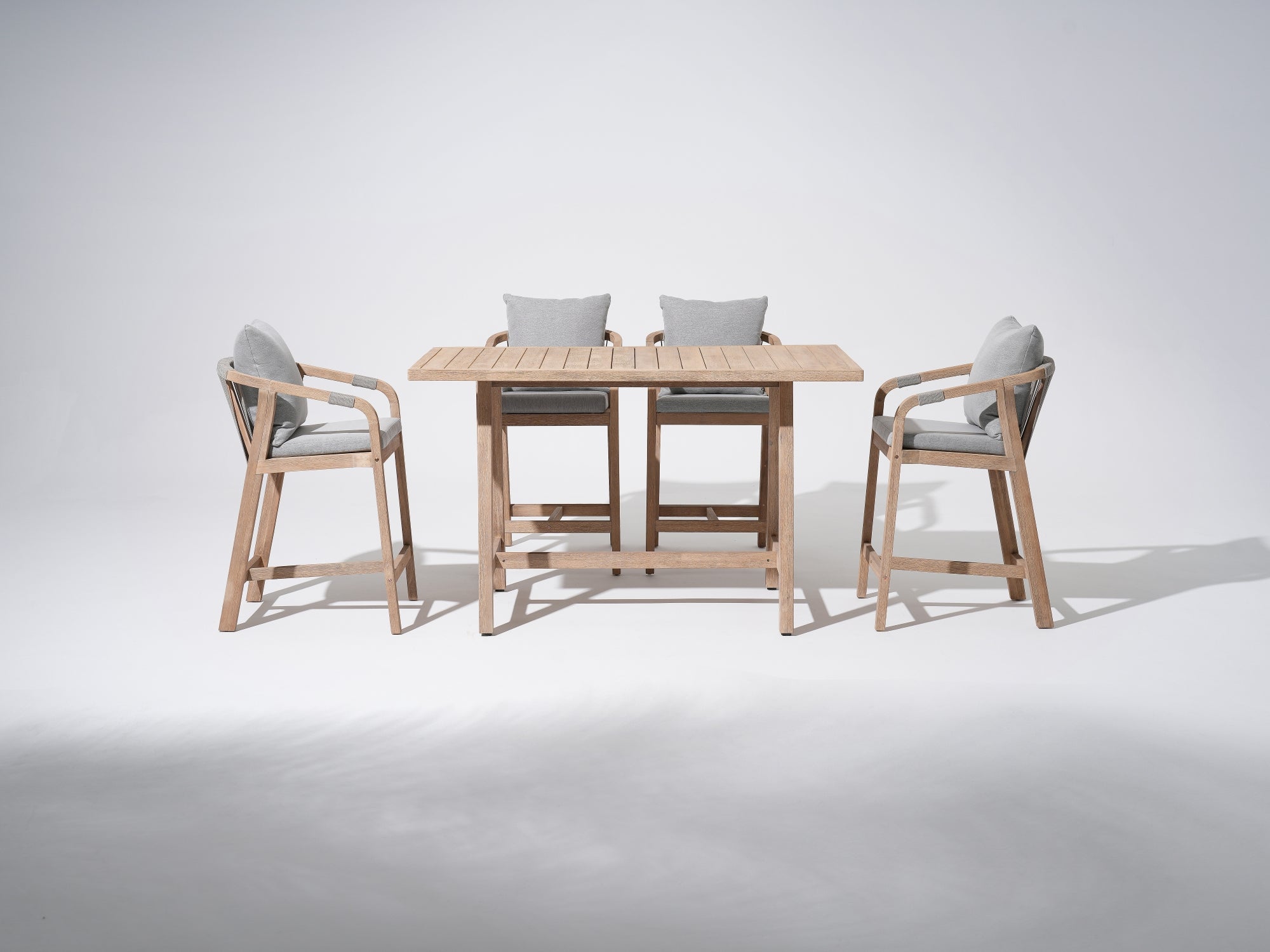
What is HDPE?

Why is HDPE Widely Used in Outdoor Furniture?
- Durability and Weather Resistance
- Low Maintenance
- Sustainability
- Design Flexibility
Comparison of HDPE with PVC, PE, and Resin

|
Property
|
HDPE (High - Density Polyethylene)
|
PVC (Polyvinyl Chloride)
|
PE (Polyethylene)
|
Resin
|
|
Density
|
High density (0.941 - 0.965 g/cm³), providing strength and durability
|
Medium density (1.35 - 1.45 g/cm³), relatively rigid
|
Low density (0.910 - 0.940 g/cm³), flexible and less strong
|
Varies widely depending on the type of resin, can be low - density (e.g., epoxy resin is often denser than PE)
|
|
Weather Resistance
|
Excellent resistance to UV radiation, moisture, and temperature extremes. Does not degrade easily outdoors
|
Good weather resistance but may become brittle over time with prolonged sun exposure. Can release harmful chemicals when burned
|
Moderate weather resistance, may degrade more quickly than HDPE when exposed to UV rays for extended periods
|
Varies; some resins are highly weather - resistant (e.g., polyurethane resin), while others may require additional treatment for outdoor use
|
|
Chemical Resistance
|
Highly resistant to a wide range of chemicals, including acids, alkalis, and solvents
|
Resistant to many chemicals but can be attacked by strong oxidizing agents. May release chlorine when exposed to fire
|
Resistant to most chemicals but less resistant than HDPE. Can be affected by some solvents
|
Varies depending on the resin type; some are highly chemically resistant, while others may be more susceptible
|
|
Durability
|
Strong and durable, with high tensile strength and impact resistance. Resistant to cracking, warping, and splintering
|
Rigid but can become brittle and crack over time, especially in extreme temperatures. Prone to scratching
|
Less durable than HDPE, more flexible and prone to deformation under stress
|
Varies; some resins can be very durable when properly formulated and cured, while others may be more fragile
|
|
Maintenance
|
Low maintenance; only requires occasional cleaning. Does not need painting, staining, or sealing
|
May require periodic cleaning and may need to be protected from sharp objects to prevent scratching. Some types may require special cleaning agents
|
Moderate maintenance; may need to be protected from UV rays to prevent degradation. Can be more difficult to clean if it absorbs dirt or stains
|
Varies; some resins are easy to clean, while others may require specific cleaning and maintenance procedures
|
|
Cost
|
Moderate cost, relatively affordable considering its durability and performance
|
Cost - effective, often less expensive than HDPE but may require more frequent replacement due to lower durability
|
Generally less expensive than HDPE, but its lower durability may offset the cost savings in the long run
|
Varies widely depending on the type of resin; some high - performance resins can be very expensive, while others are more affordable
|
|
Sustainability
|
100% recyclable. Many manufacturers use recycled HDPE in production
|
PVC is recyclable but the recycling process is more complex and less common. It can release harmful chemicals during production and disposal
|
Recyclable, but recycling rates are relatively low. Some types of PE are made from non - renewable resources
|
Varies; some resins are biodegradable or made from renewable resources, while others are less sustainable
|
|
Aesthetic Appeal
|
Can be molded into various shapes and colors. Can mimic the look of other materials like wood or wicker
|
Available in a wide range of colors and textures. Can be used to create detailed and decorative designs
|
Limited in terms of color and texture options compared to HDPE. Often used for more functional rather than decorative applications
|
Highly customizable; can be pigmented, textured, and shaped into intricate designs. Some resins can achieve a very high - end and luxurious look
|


